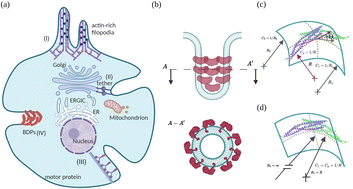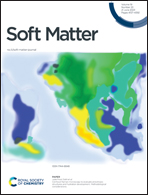Formation of protein-mediated bilayer tubes is governed by a snapthrough transition†
Abstract
Plasma membrane tubes are ubiquitous in cellular membranes and in the membranes of intracellular organelles. They play crucial roles in trafficking, ion transport, and cellular motility. These tubes can be formed due to localized forces acting on the membrane or by the curvature induced by membrane-bound proteins. Here, we present a mathematical framework to model cylindrical tubular protrusions formed by proteins that induce anisotropic spontaneous curvature. Our analysis revealed that the tube radius depends on an effective tension that includes contributions from the bare membrane tension and the protein-induced curvature. We also found that the length of the tube undergoes an abrupt transition from a short, dome-shaped membrane to a long cylinder and this transition is characteristic of a snapthrough instability. Finally, we show that the snapthrough instability depends on the different parameters including coat area, bending modulus, and extent of protein-induced curvature. Our findings have implications for tube formation due to BAR-domain proteins in processes such as endocytosis, t-tubule formation in myocytes, and cristae formation in mitochondria.



 Please wait while we load your content...
Please wait while we load your content...